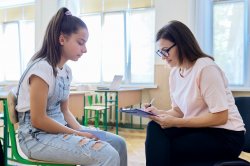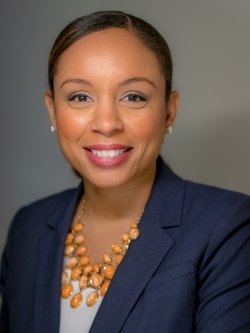With Kids Back in School, Now’s the Time for Big Changes
This “new normal” is a chance to offer better resources to students
Posted in: Education, Faculty Voices

Students are expected back for full-time, in-person instruction in K-12 schools this fall, and as they’re welcomed back into the classroom, school districts will have to identify and prepare for new challenges. Here, four Montclair State education experts explain how this “new normal” brought on by the pandemic may open up opportunities to offer more resources, new curricula and a better understanding of how to nurture student growth outside of the classroom.

Tanya Maloney, assistant professor of Teaching and Learning
Educators should address the physical and mental toll this year has taken on children and educators by demanding the guidance counselors, nurses and social workers our schools needed before the pandemic. I hope educators will give themselves the permission to reevaluate what children are learning and create school curricula to develop their racial and social awareness. We learned too much in this last year about persistent systemic oppression to simply return to business as usual. Let us use this moment to demand more.

Lesley Sylvan, assistant professor of Communication Sciences and Disorders and expert on special education policy
It will be important for schools to avoid “one-size-fits-all” solutions and to be thoughtful about utilizing the expertise of all professionals in schools to support students, especially school-based speech-language pathologists (SLPs).
Given the broad agreement that the most vulnerable populations of students – English language learners, students from historically disadvantaged racial and cultural backgrounds, and students with limited financial resources – have been most negatively impacted by the pandemic, it is critical for schools to provide them the support they need without disproportionately or inappropriately labeling these students as disabled.

Jessica Bacon, assistant professor of Teaching and Learning and expert in inclusive learning
I think COVID can provide schools with an opportunity to refocus on their commitments to equity work that integrates the pursuit of inclusion through anti-ableist and anti-racist practices and policies. For instance, teachers may see that many students (particularly marginalized students) are being viewed as struggling learners as they return to school, primarily because they may have lacked access to equitable learning opportunities or resources during the past year. As students return to school, educators have an opportunity to start to think about those students through a strength-based lens – and rather than viewing students that don’t keep up with grade-level expectations through a deficit lens that frames the student as being behind, or even possibly “disabled”– educators instead can seek to find supports and resources that can help the child develop at his or her own pace within a supportive and inclusive community of learners.

Tara Conley, assistant professor of Transmedia Storytelling and expert in youth studies
On one hand, I think we’re still beginning to understand the long-term impact virtual learning has had on students. On the other hand, there are indications, at least anecdotally, that virtual school has had a significant impact (both positively and negatively) on students’ learning, socialization and overall well-being. From my experience teaching during the pandemic, it’s a bit of a mixed bag. Some of my students thrived in an online learning environment, while other students definitely struggled. I also take into account external factors that impact student learning. For instance, I teach at a public university where I work with students who are primary caretakers of family members. They may also have full-time jobs. Some also experienced virtual learning while recovering from COVID or even lost family members to the virus. Some students also confront socioeconomic challenges that certainly impact their overall college experience. Don’t look at the issue of virtual learning and the achievement gap in a vacuum. There are so many factors that contribute and will continue to contribute to these shifts in learning and achievement.
To speak with one of our education experts, contact Montclair State University Media Relations.
